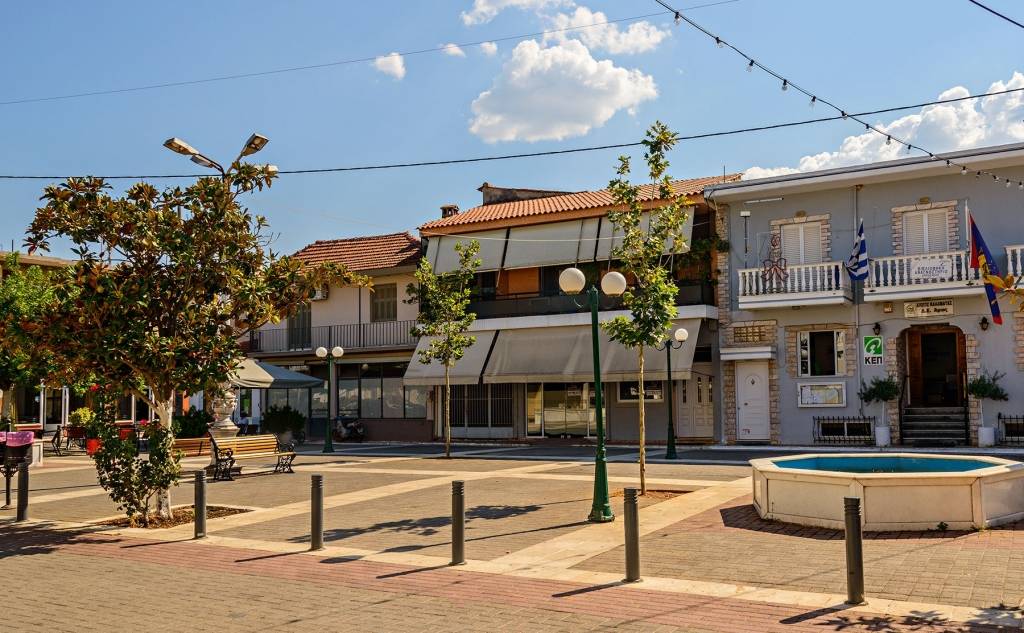





Aris is built at an altitude of 26 metres and is 13 kilometres from Kalamata. The entire area of the Lower Messenian plain (known as the "Blessed Land") was uninhabited before the Frankish period due to its swampy nature. During the first years after the Revolution of 1821, the village was called Aslanaga. Subsequently, it was proposed to be renamed Makaria, as it was the largest village in the Lower Messenian Plain. Still, in the end, the name Mespotamia (in between rivers) was selected since it was built between two rivers (Aris and Pamisos). Later, the village changed its name again and was renamed, Aris.
In the village, the wood-carved iconostasis of the central church, made by Epirote artists in the 19th century, is of particular interest. The Pamisos dam that holds back the waters of the river is also worth visiting, while on the opposite bank, the Kalamata Air Base is built - the Air Force training centre. Of particular interest are the facilities of the former A.S.O. on the riverbank. A.S.O is the former winery, with a total area of 10 acres, the antiquity of which makes it a monument of industrial heritage and historical value for the region.
General Anastasios Tzamalis (or Tsamalis), known for his action during the Revolution of 1821 and one of the leaders of the Messenian Revolution of 1834 (along with Giannakis Gritzali and Mitripetrova), came from Aris. In his honour, a small monument has been erected outside the village. Alexandros Brumas, a fighter of the Resistance, as well as numismatist, Anastasios P. Tzamalis, also came from the village.
Finally, the village solemnly celebrates on the 15th of August, the day of the celebration of the Assumption of the Virgin Mary, while the traditional wheat fight and the burning of Judas take place every year on Easter Monday, attracting crowds from the whole prefecture.